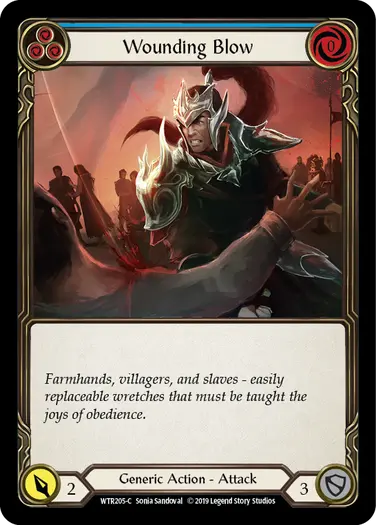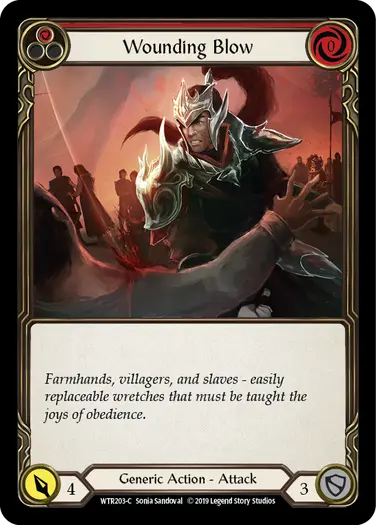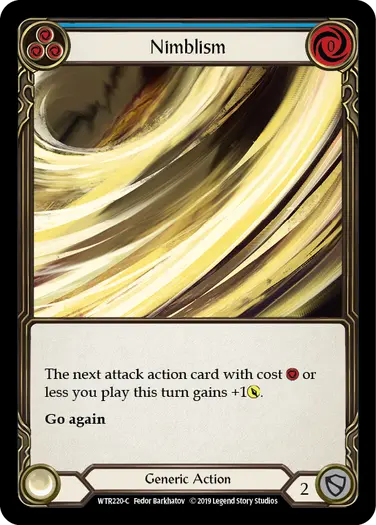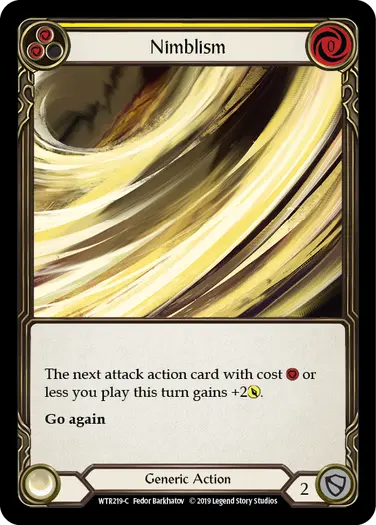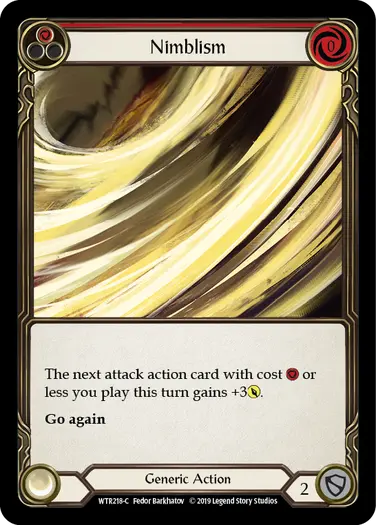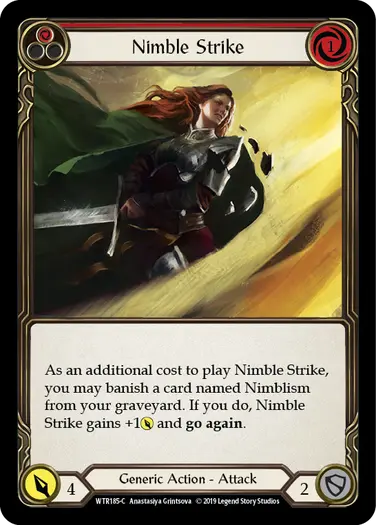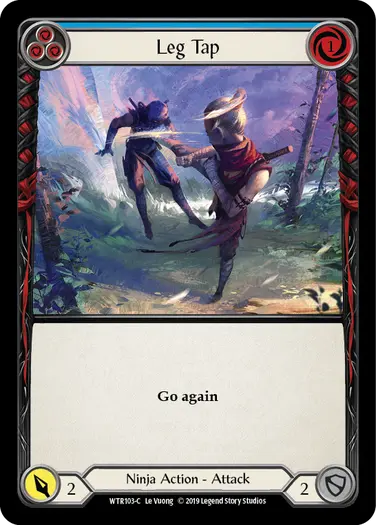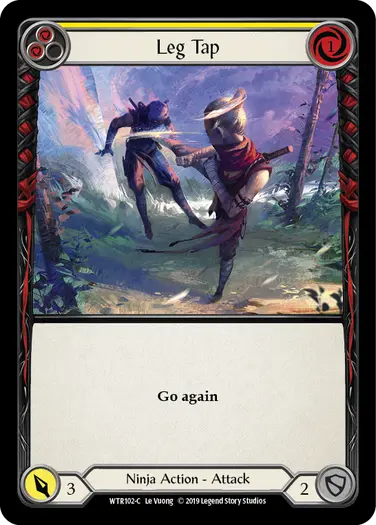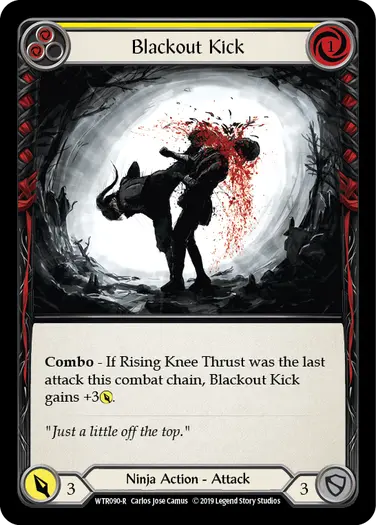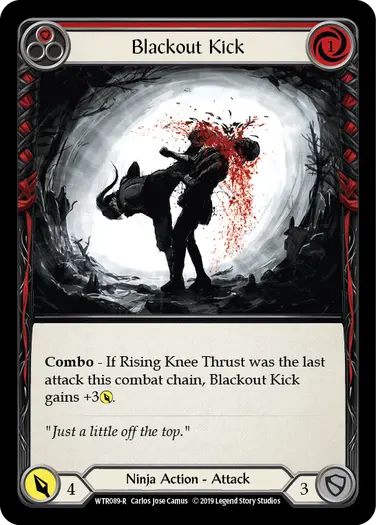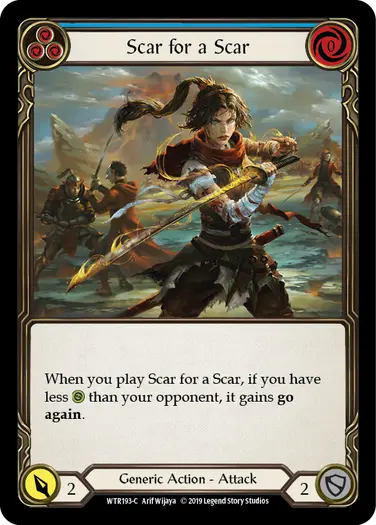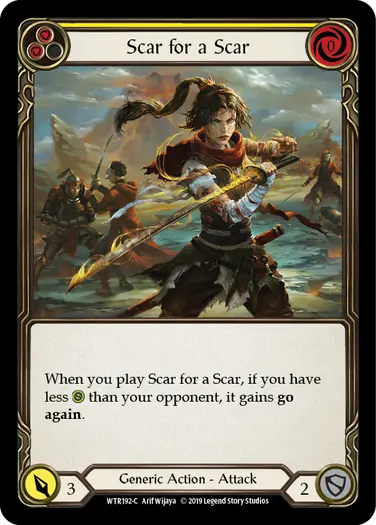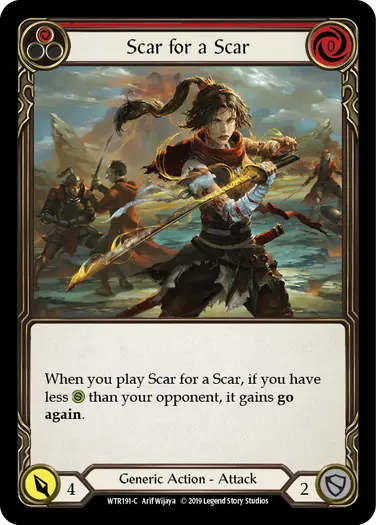Flesh and Blood has gone through 7 years of game development. Over that time, we went deep into the exploration of design space, concepting, and design philosophies.
One of the fundamental things any game needs to work out in the design phase is the "power to cost" distribution table. For example a game that is based around creatures needs to establish a baseline for how much power and toughness a creature should have at each possible cost related to that games resource system.
For Flesh and Blood, the baseline we needed to establish was how much power and defense value an attack should have relative to its cost and pitch value, or what we call the "cost pitch power distribution table".
We decided fairly early on that we wanted the baseline defense value of a card to be 3. It then took many games with a prototype box set hero called Generix (to be revealed one day in the distant future) to work out the power of attacks relative to the cost and pitch value.
This process lead to a breakthrough "AHA!" moment, when we discovered the commonality that existed between cards at the same cost relative to how their pitch value scaled. In that moment it became as obvious as “1, 2, 3” that the design framework of our game was built on cycles.
One Answer. A Thousand Questions
Working out the answer to the framework of our game, lead to a thousand new questions, including what implications does this have on concept design, how will people communicate it, and how will players respond to something that challenges the established norms.
Flesh and Blood deck construction allows up to 3 copies of a unique card in their deck. The Comprehensive Rules defines a unique card as follows:
4.4 – A registered deck may contain up to 3 copies of each unique card. A card is unique if it has a different card name or pitch value from any other card. (eg. Nimblism pitch {r} is unique from Nimblism pitch {r}{r}{r}. You can have up to 3 copies of each version of Nimblism in your deck.)
Cycles allow a deck to have up to 9 cards with the same name. That helps a lot when designing A+B cards…
… or A+B+C cards!
Commons and Rares Only
Cards that are cycles appear only at common and rare. Super rare, majestic, and equipment cards do not have cycles.
We want high rarity cards to feel unique. We design these cards with effects that make sense existing in smaller quantities, ie. 3 max per deck, and often with stats or effects that are not scalable at all.
Learning to Read, Write, and Speak the Cycles
The Flesh and Blood dev team have been playing with cycles for years. Communicating which card from a cycle you are talking about is easy. We typically refer to them in one of two ways:
- "Scar top end", or " Scar red" when talking about Scar for a Scar (1)
- "Scar mid", or "Scar yellow" when talking about Scar for a Scar (2)
- "Scar bottom" or "Scar blue" when talking about Scar for a Scar (3)
When talking about a card that is part of a cycle, often you won't need to specify which version because it's inferred. For example, one version of Scar for a Scar will see 95% of tournament play relative to the rest of the Scar cycle. When someone says "Scar" unless they specify otherwise, you'll infer they mean Scar for a Scar (1).
Which leads us to written communication. As in our example above, when specifying, add (1), (2), or (3) after the card name to indicate which pitch value you are referring to.
When registering a deck list for a constructed format tournament, players are required to separate their cards by pitch value on the deck registration sheet. The official deck registration sheet is available here. In the future, this will be even easier when you can submit your deck list for an official event using your GEM player account.
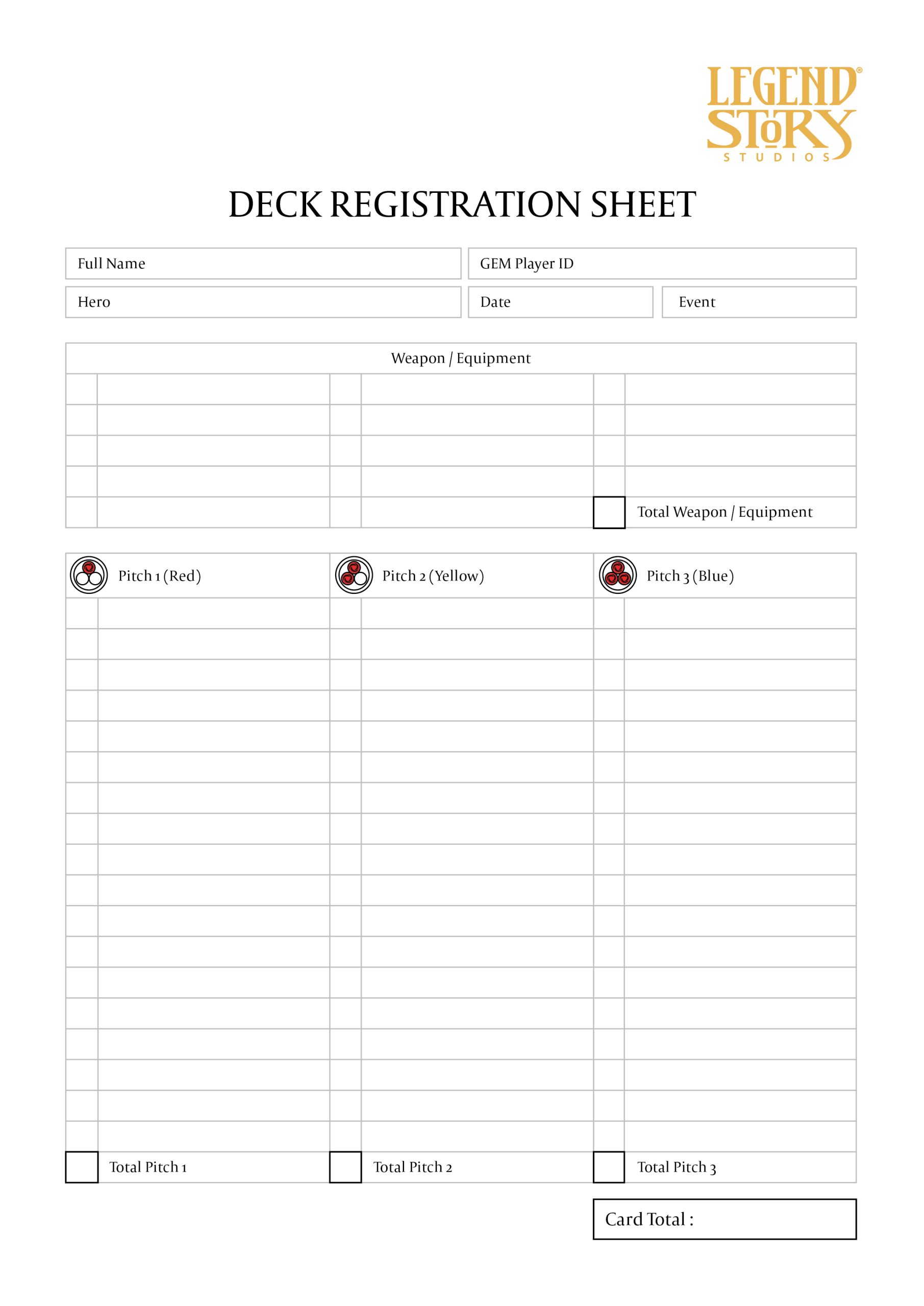
Challenging Established Norms… Sort of
The cycles of Flesh and Blood are something new to the Trading Card Game industry, but something similar has existed for hundreds of years in another card form we are all familiar with:
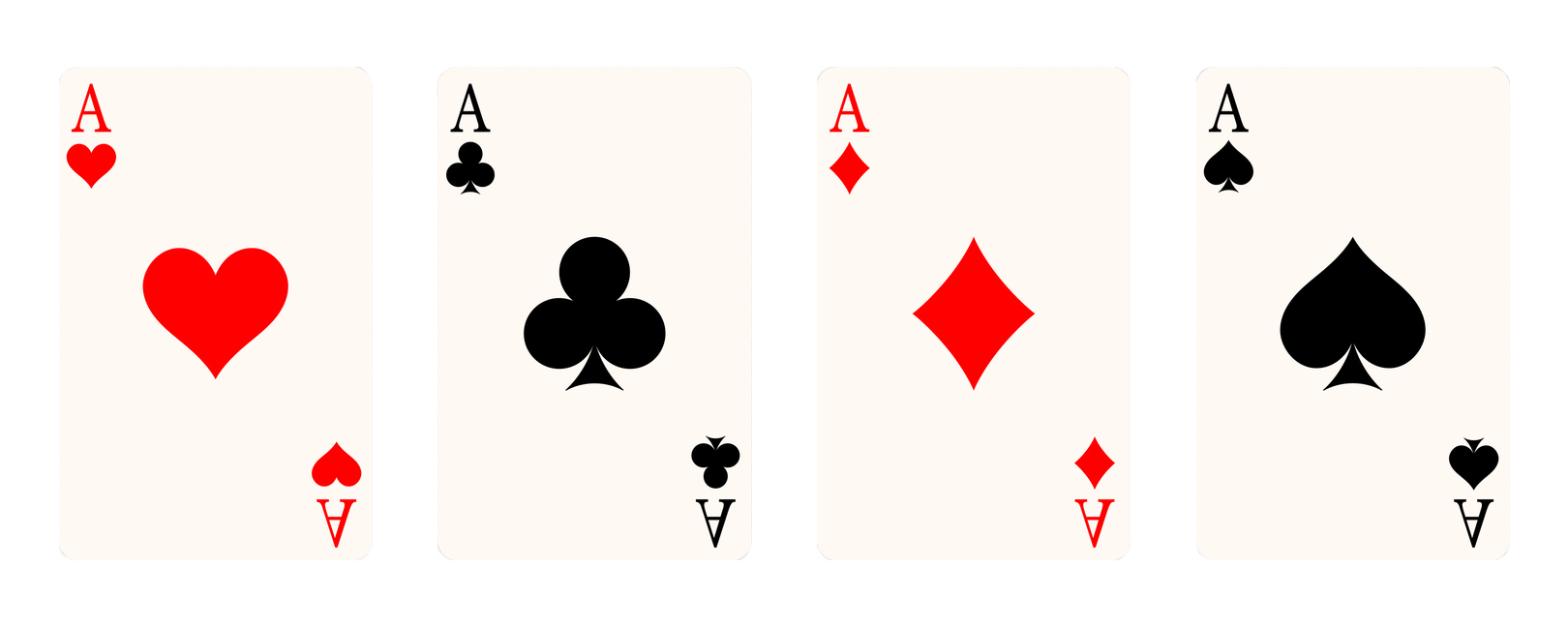
Head over to the Welcome to Rathe card image gallery to see what cards are now three times the fun!
